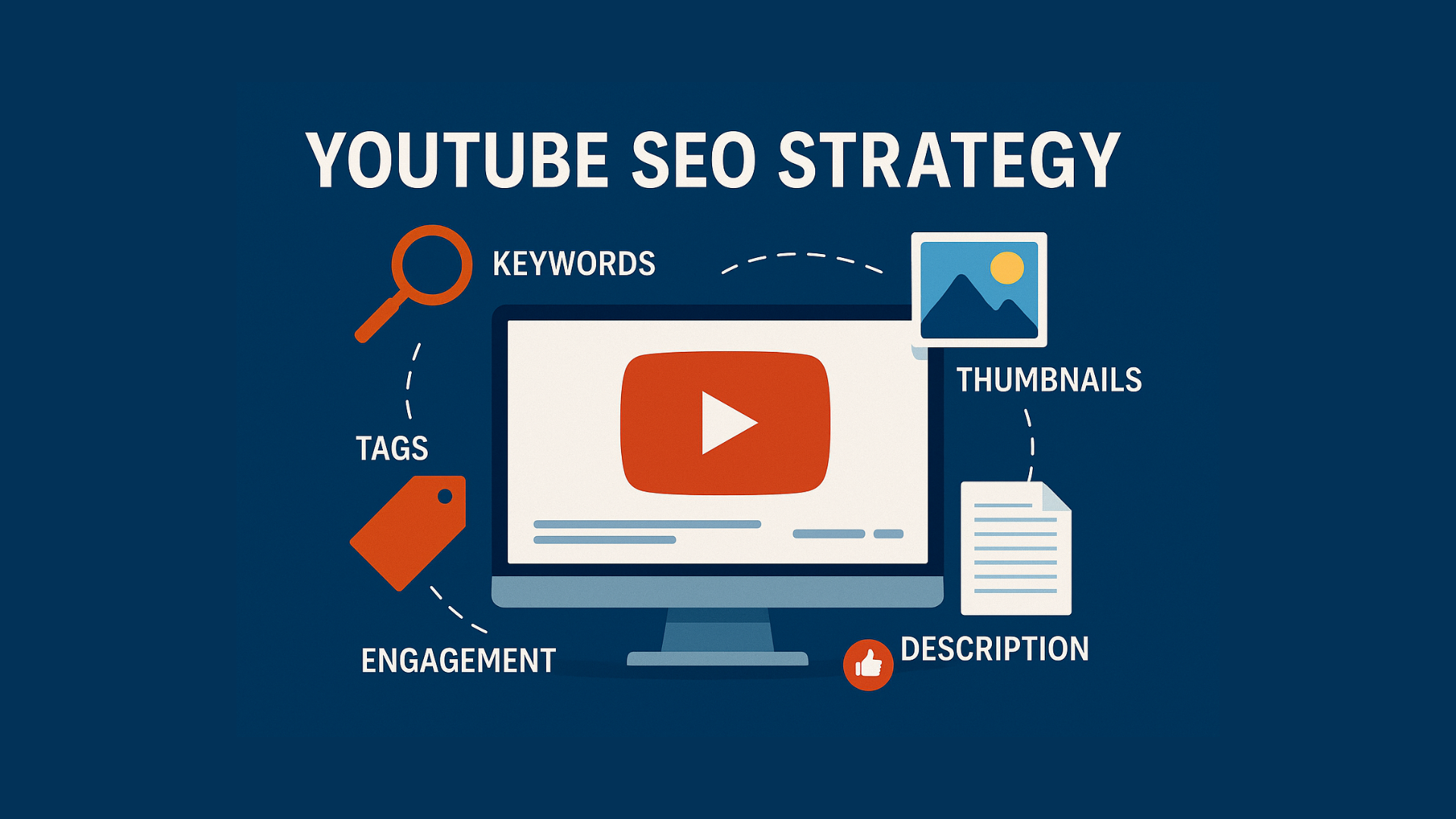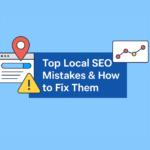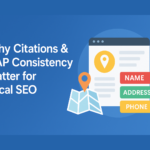- July 6, 2025
- Categories: SEO
- Tags:
YouTube SEO Strategy: How to Rank Your Videos on Top in 2025
With over 2.5 billion monthly users, YouTube is the second-largest search engine in the world,right after Google. But simply uploading a video isn’t enough to get noticed. If you want to appear in search results, suggested videos, and on the homepage, you need a solid YouTube SEO strategy.
SEO for YouTube goes beyond keywords. It’s about optimizing every element,from video content to metadata to engagement signals,to help YouTube understand your content and deliver it to the right audience.
In this guide, we’ll walk you through a step-by-step strategy to optimize your YouTube videos for maximum reach and performance in 2025.
What Is YouTube SEO?
YouTube SEO is the process of optimizing your channel, videos, and metadata to improve visibility in both YouTube and Google search results. It includes elements like:
- Keywords in titles and descriptions
- Tags and closed captions
- Thumbnails and playlists
- Engagement signals like watch time, likes, and comments
A strong SEO strategy helps increase organic visibility, boosts subscriber growth, and drives consistent traffic to your videos without paid promotions.
YouTube SEO Strategy: Step-by-Step Guide
1. Conduct YouTube Keyword Research
Every successful YouTube SEO strategy starts with identifying the right keywords. These are the terms your target audience is actually typing into YouTube’s search bar. Start by using YouTube’s autocomplete feature,it suggests popular search terms based on real-time trends. Also, analyze competitor videos for recurring keywords in titles and tags. To go deeper, leverage tools like TubeBuddy, VidIQ, and Google Trends (set to YouTube Search) to uncover high-potential topics.
2. Optimize Video Titles with Target Keywords
Your video title is one of the most important ranking factors on YouTube. It’s the first thing users and the algorithm see, so it needs to be compelling, keyword-rich, and promise clear value. Make sure the main keyword appears naturally in the title, preferably at the beginning.
For example:
Bad Title: “Instagram Tricks”
Good Title: “10 Hidden Instagram Reels Tricks You Didn’t Know (2025 Guide)”
Always write for humans first, then optimize for search engines.
3. Write an SEO-Optimized Description
A well-written description helps YouTube understand what your video is about and improves your chances of appearing in search and suggested results. Start by placing your primary keyword within the first two lines. Add timestamps for easier navigation, and include LSI keywords and related phrases naturally throughout the text. Also, link to other relevant videos or landing pages to improve dwell time and user flow.
Example:
Learn the latest YouTube SEO strategy to grow your channel in 2025. In this video, we cover tips on optimizing your titles, descriptions, tags, and thumbnails.
4. Use Tags Wisely
While tags don’t hold as much weight in YouTube’s algorithm as they once did, they still play a role in helping YouTube categorize your content. Use your target keyword, as well as synonyms and variations, to improve discoverability. You can also include your brand name as a tag. Tools like VidIQ or TubeBuddy can help you reverse-engineer the tags top-ranking videos are using.
5. Design Custom, Click-Worthy Thumbnails
Your thumbnail is crucial for attracting clicks,even more than your title at times. A great thumbnail improves your CTR (Click-Through Rate) and signals YouTube that your video is worth promoting. Use bold fonts, contrasting colors, and emotive visuals to grab attention. Keep any text minimal and make sure the overall look aligns with your brand identity.
6. Add Captions and Subtitles
Adding closed captions (SRT files) to your videos boosts accessibility and contributes to SEO. YouTube’s auto-generated captions are a good start, but they often contain errors. Uploading accurate captions helps the algorithm better understand your content and improves ranking for voice search and multilingual queries. It also helps viewers follow along more easily,especially in noisy environments or for non-native speakers.
7. Encourage Engagement
YouTube rewards videos that generate interaction. Engagement metrics like watch time, likes, comments, shares, and subscriber gains all influence how your video ranks. That’s why it’s important to encourage viewers to engage throughout the video,ask questions, invite comments, and include clear calls to action.
Example CTA: “If you found this tip helpful, give us a like and drop your thoughts below!”
8. Create Playlists with SEO Titles
Playlists aren’t just for organizing your videos,they’re also searchable assets. A well-structured playlist can appear in YouTube and Google search results, increasing your channel’s reach. Use keyword-rich titles, group related content together (e.g., “YouTube SEO Tips for Beginners”), and include descriptions to give context. This also improves watch session duration, another key SEO signal.
9. Promote Your Videos Across Channels
Don’t rely on YouTube alone to drive traffic. Cross-promote your videos through other digital channels like Instagram, LinkedIn, email newsletters, blog posts, and even forums or niche communities. Sharing your videos externally not only boosts views and engagement but also increases the likelihood of getting backlinks,another indirect ranking factor.
10. Track Performance and Optimize
Use YouTube Analytics to monitor how your content is performing. Pay close attention to:
- Click-through Rate (CTR)
- Average View Duration
- Engagement Metrics
- Traffic Sources
YouTube SEO Is a Long-Term Game
Ranking on YouTube takes more than just uploading quality videos,it takes consistent optimization, research, and engagement. With the right YouTube SEO strategy, you can increase visibility, grow subscribers, and generate long-term traffic without spending on ads.
Whether you’re a creator, business, or marketer, implementing these steps will help your content stand out in 2025’s competitive video landscape.
Ready to Grow on YouTube?
At VP Advertising Agency, we help brands create optimized YouTube content that ranks and converts. Let’s work together to level up your video strategy.




